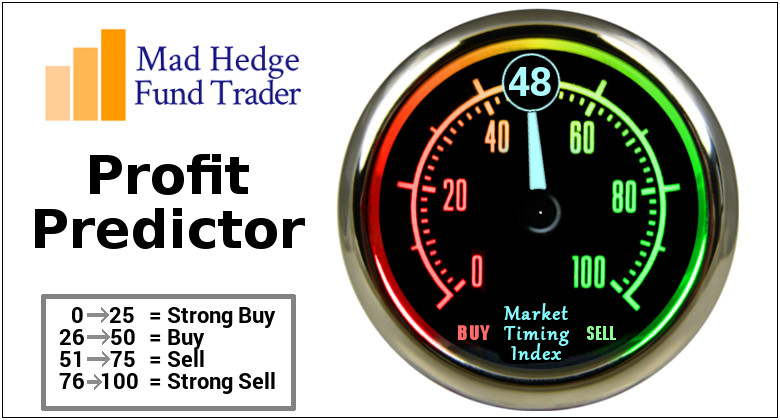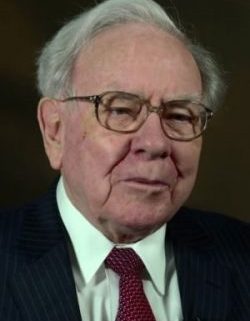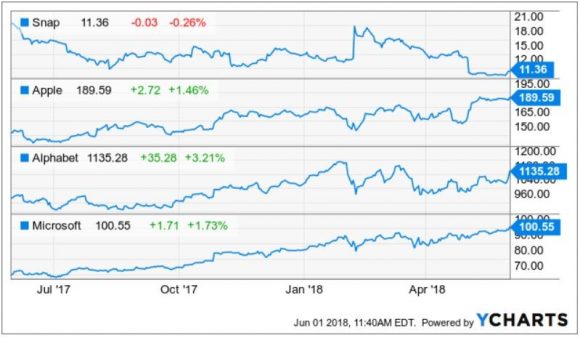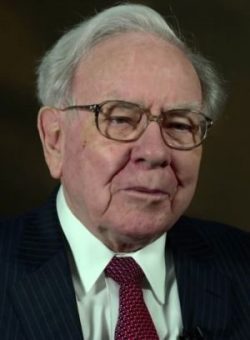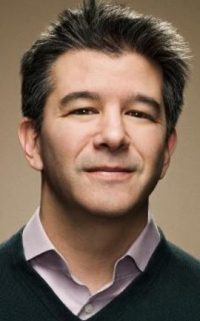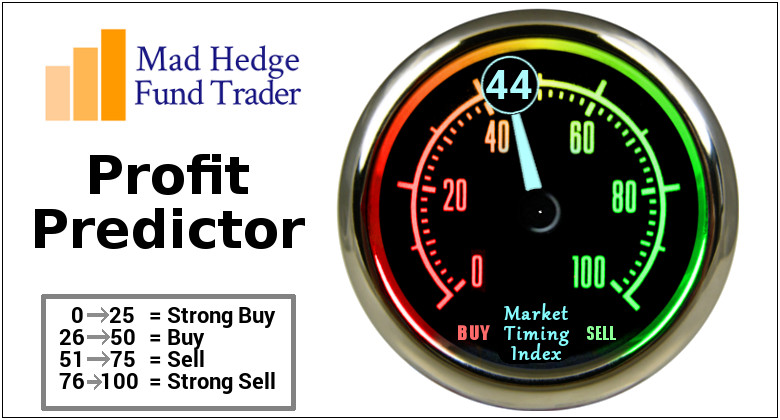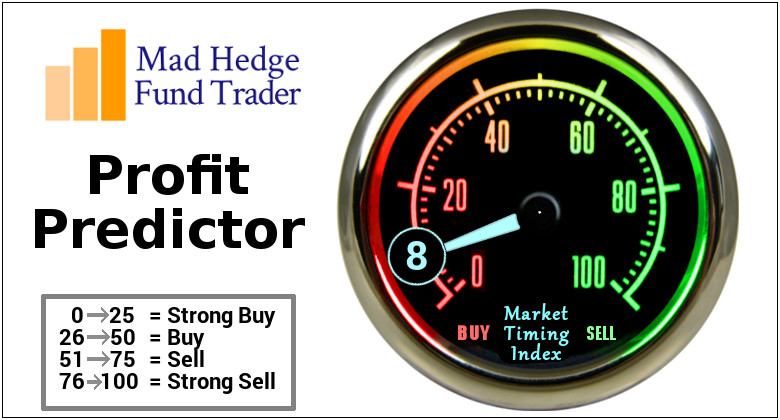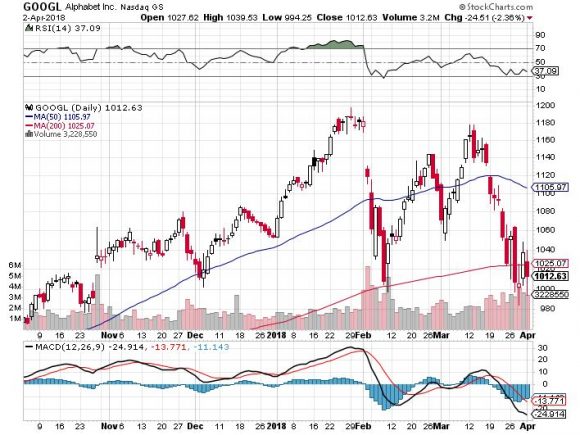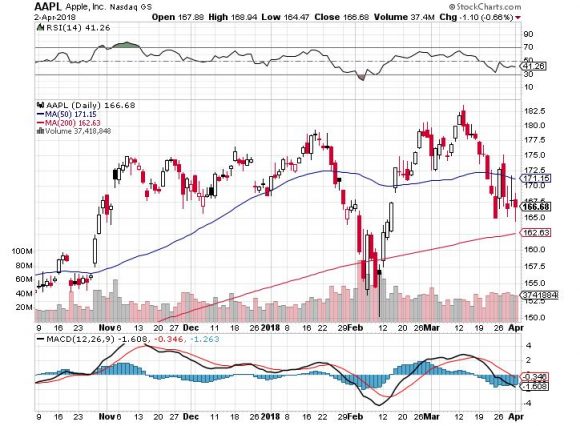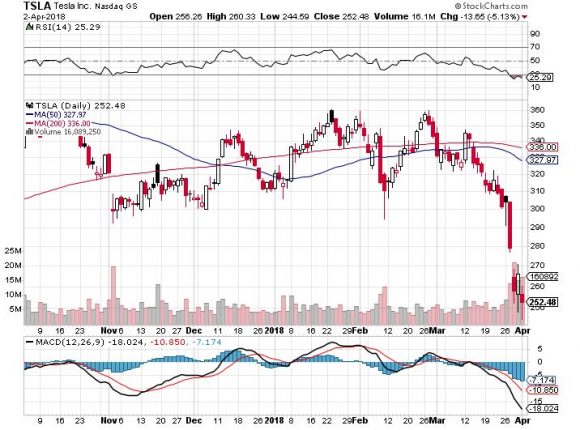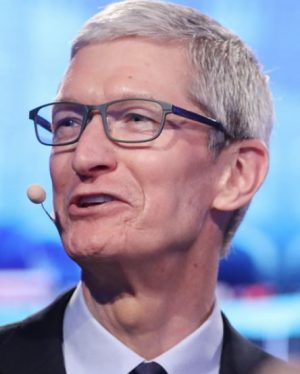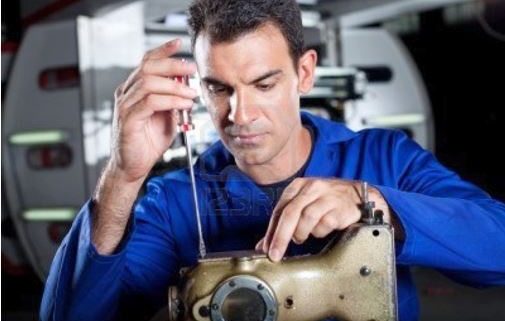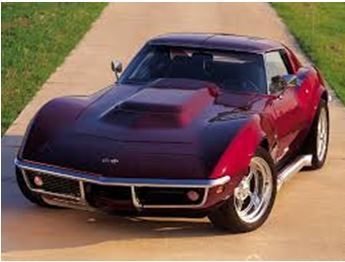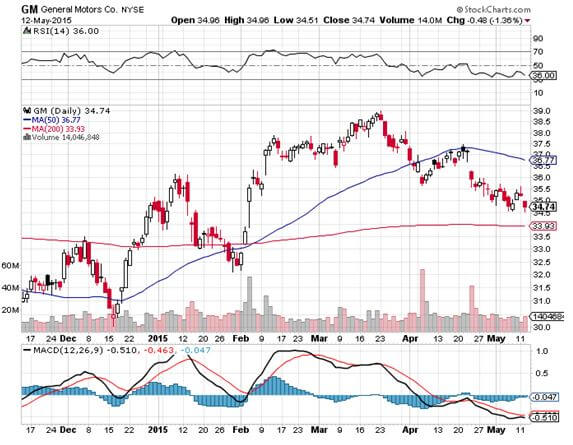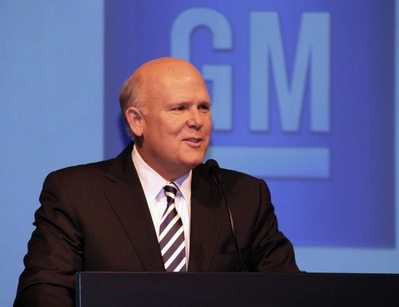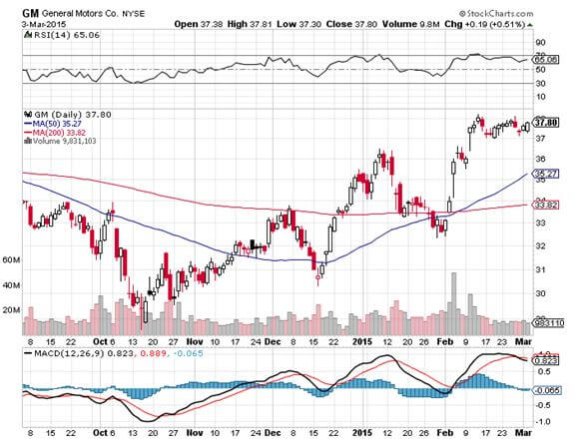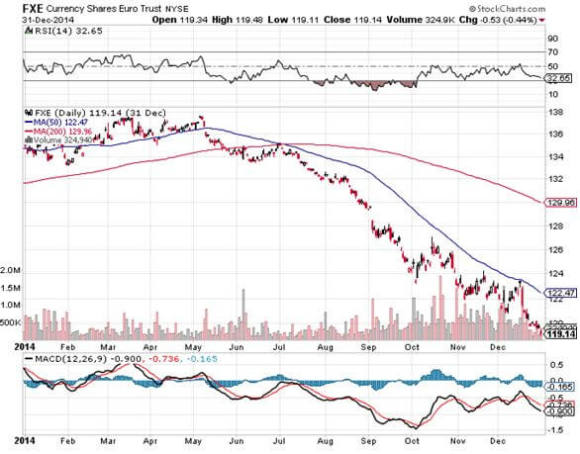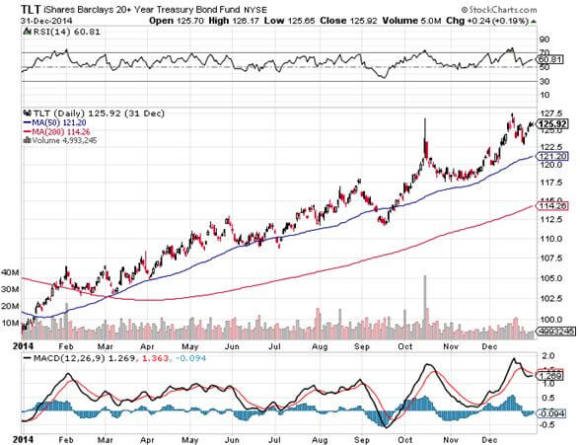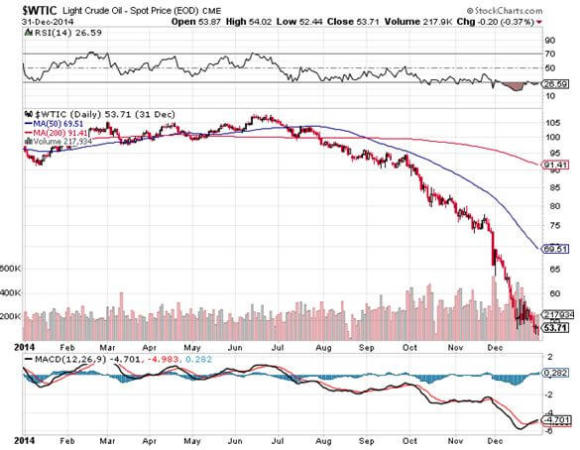Mad Hedge Technology Letter
June 4, 2018
Fiat Lux
Featured Trade:
(THE INNOVATOR'S DILEMMA),
(UBER), (WMT), (SNAP), (MSFT), (GOOGL), (AAPL), (GM), (IBM)
Posts
I must confess, innovation can't be taught.
You are innovative, or you aren't. Don't pretend otherwise.
Innovation drives companies to outperform.
The economic environment becomes more cutthroat by the day rendering complacent companies obsolete.
Top-quality innovation leading to outstanding entrepreneurship is a well-traversed theme transcending industries across the American economic landscape.
The reservoir of innovation in 2018 is primarily flowing from one narrow source - the tech sector.
This is the primary motive for many adjacent industries to incorporate tech expertise into existing and commonly ancient legacy systems.
Tech promises laggards a ride atop the gravy chain.
In many instances, these companies are grappling with existential threats from all directions.
The best example is Walmart (WMT), which effectively mutated into the next FANG with its majority stake in Indian e-commerce juggernaut Flipkart. This deal followed its purchase of Jet.com in 2016, which was its first foothold in the e-commerce world.
Traditional companies are becoming tech companies because of the ability to innovate all leads through the fingertips of talented coders.
When all roads lead to Rome, you will have to go through Rome.
The hunger for innovation has had major implications to the financial side of technology.
The story picks up from a recent report disclosing the 2017 remuneration of co-founder and CEO of Instagram competitor Snapchat (SNAP) Evan Spiegel.
The $637.8 million he received in 2017 was the third-highest annual compensation ever to be collected by a CEO.
Snapchat has tanked following its 2017 IPO and the main reason is Facebook is stealing its lunch and leaving Snap the crumbs on which to nibble.
Instagram, using a cunning strategy of cloning Snap's best features, single-handedly bludgeoned Snap's share price cutting it by half after the successfully launched IPO.
Snap has been an unequivocal sell on the rallies stock since the inception of the Mad Hedge Technology Letter and the disastrous redesign did no favors either.
My first risk off recommendation was Snapchat and at the time it was trading at $19. To revisit the story, please click here.
Microsoft (MSFT) is a great stock because it posts accelerated revenue and earnings, while Snapchat is a terrible company because it produces accelerated losses and lousy user growth.
A company almost 100 times smaller than Microsoft should not be struggling to grow.
It's a failure of epic proportions.
Small companies expand briskly because the law of numbers is leveraged in their favor and the tiniest bump of additional business has a larger effect on the bottom line.
As it stands, Snapchat lost $373 million in 2015, and followed that up with a disastrous $514 million loss in 2016, and a gigantic $3.45 billion loss in 2017.
Losses accelerated by 800% but annual revenue only doubled last year.
It was no shocker that the poor relative performance resulted in the sacking of 100 Snapchat developers.
Smart people would assume an annual salary of this magnitude (Spiegel's) would be the result of excellent performance.
Why else would a CEO get a lavish payout?
I'll explain.
The demand for tech knows no bounds.
In this environment, venture capitalists will pay up for brilliant ideas.
The problem is that brilliant ideas don't grow on trees.
The few cutting-edge ideas have stacks of money thrown at them.
In this sellers' market, founders can cherry-pick the best financing deal that will enrich them the quickest and empower them the most.
Multiple offers have become the norm just as with the Silicon Valley housing market.
The consequences are the premium for these brilliant ideas keeps rising and investors keep paying higher prices without a second thought.
Therefore, founders and CEOs are opting for the financial packages that offer them bulletproof voting shares, allowing the innovators to control operations to the very last detail.
The founders are responsible for leading innovation, and investors are offering glorious pay terms for this innovation because it can't be substituted. Low-quality tech has less of a premium because the technology can easily be rebranded and substituted.
Technology from the ground up is slowly being automated away leaving runaway valuations the norm.
Giving the keys to the Ferrari makes sense as tech companies formulate long-term strategies based on scale. And securing job security without the threat of an activist takeover offers peace of mind for CEOs who are focused on the daily grind.
Knowing their baby won't get stolen from the carriage goes a long way in tech land.
Venture capitalists are reticent about following through with proper governance because they do not want to alienate the innovators who could choose to stop innovating.
These investors also know that tech is the least regulated industry in the world, so it's better to turn a blind eye to cunning growth strategies that push the border of regulation.
The competition to fund these emerging tech companies is borderline criminal.
Uber declined a $3 billion investment by no other than the Oracle of Omaha Warren Buffett.
Buffett described himself as a "great admirer" of Uber CEO Dara Khosrowshahi.
Uber is one of the most unlikely Warren Buffett investments because it doesn't create anything and burns cash faster than a Kardashian.
Buffett's faith in Uber underscores the reliance on tech to fuel the stock market to new heights.
Buffett also admitted mistakes on missing out on Alphabet (GOOGL) and Apple (AAPL).
Rightly so.
Then add in the mix of SoftBank's $100 billion vision fund that just announced an upcoming sequel with another $100 billion vision fund.
Where is all this money flowing into?
Of the tech companies that went through an IPO last year backed by venture capitalist money, 67% relinquished superior voting rights to key founders, a rise of 54% since 2010.
Compare that to non-tech companies that only allow 10% to 15% of CEOs to institute a voting structure that will put them in charge indefinitely.
In many instances, the persona of these ultra-famous tech CEOs has taken on a life of its own.
Elon Musk, CEO of Tesla, is the most prominent example of a celebrity tech innovator milking every possible penny from his shareholders and is not shy about flaunting it.
News has it that Musk needs to go back to the well for another stage of financing later this year.
Don't worry, the money will be there in this climate.
Buffett's rejection was due to losing out to SoftBank, which beat out Buffett to invest in Uber.
SoftBank just announced a $3.35 billion investment into GM's (GM) autonomous driving unit called Cruise enhancing the best big data portfolio in the world.
At this pace, CEO of SoftBank Masayoshi Son will have a piece of every major big data company in the world.
This all bodes well for tech equities as the insatiable hunt for emerging, innovative tech spills over into daily equity market driving up the prices for all the top innovating public companies such as Salesforce, Amazon, Microsoft and Netflix.
Buffett, down on his luck after being shafted by Uber, picked up more Apple shares.
He sold all his IBM (IBM) shares after reading the Mad Hedge Technology Letter advising him to stay away from legacy companies.
Smart move, Warren. You can pick up the tab for our next lunch date.
If you have a few billion to throw around, expect multiple offers over the asking price for any high-grade tech innovation.
The going rate is shooting through the roof and you might NEVER be able to sack the founder.
Caveat emptor.
_________________________________________________________________________________________________
Quote of the Day
"We knew that Lyft was going to raise a ton of money. And we went (to their investors): 'Just so you know, we're going to be fund-raising after this, so before you decide whether you want to invest in them, just make sure you know that we are going to be fund-raising immediately after.' " - said former CEO and founder of Uber Travis Kalanick when asked how he copes with competition.
Global Market Comments
May 31, 2018
Fiat Lux
Featured Trade:
(MONDAY, JUNE 11, 2018, FORT WORTH, TEXAS, GLOBAL STRATEGY LUNCHEON),
(ARE WE SEEING "PEAK AUTO SALES"?),
(GM), (TM), (F), (HMC), (TSLA) (NSANY),
(TESTIMONIAL)
Mad Hedge Technology Letter
April 3, 2018
Fiat Lux
Featured Trade:
(THE BIG WINNER FROM THE PHOENIX CAR CRASH),
(WAYMO), (TSLA), (GOOGL), (AAPL), (AMZN), (UBER), (GM), (FB)
In 2014, the juicy sound clips recorded by NFL legend Chris Carter at the annual NFL rookie symposium would be enough for those at league headquarters to have nervous breakdowns.
During a keynote speech, Chris Carter recommended that every rookie about to kick-start a sports career should find a "fall guy" just in case they found themselves on the wrong side of the law.
Carter later rescinded his comments and sincerely apologized for insinuating marginal tactics.
Lo and behold, it seems the most attentive listeners at the symposium weren't the players but the swashbuckling chauffeur-share service that has become the "fall guy" of Big Tech, none other than Uber.
The great thing (read: sarcastic here) for Uber about killing a pedestrian with autonomous vehicle technology is that it does not need to change its Silicon Valley mind-set of "move fast and break things."
Everything Uber touches seems to turn to mush. At least lately.
This revelation is extremely bullish for the other big players in the A.I. (Artificial Intelligence) driverless car space, mainly Waymo and General Motors (GM).
Granted, Uber came late to the party, but that cannot be an excuse for the myriad of shortcuts it promotes to build its business.
Waymo, the autonomous subsidiary of Google (GOOGL), has been honing its software, algorithms, and sensors for the past nine years like a sage samurai swordsmith from Kyoto. This type of detailed nurturing has led Waymo to rack up more than 5 million miles of testing on live roads.
The company recently commenced the first niche ride-hailing service in Phoenix, AZ, and just announced that it will purchase up to 20,000 electric cars from Jaguar Land Rover in a $1 billion deal to outfit with its cutting-edge technology.
Every day is a joyous day for Waymo because the first mover advantage is in full effect.
GM, another laggard, though considered in the top three, won't commence its robotic car fleet until late 2019. However, by that time, Waymo could be on the verge of mass rollouts if there are no setbacks.
The cherry on top for Waymo is Uber's knack of making a dog's breakfast of anything it pursues, magnifying an insurmountable lead for Waymo to possess.
Granted, the autonomous vehicle brain trust expected casualties, and the firm that made news for this mishap would be stuck with this label along with suspended operations.
Waymo missed a direct hit thanks to Uber and Tesla.
Tesla also took a direct hit when it announced that Walter Huang, an Apple engineer, sadly was killed in a Model X accident last weekend while his car was on autopilot.
It capped a horrible week by announcing a comprehensive recall of every Model S made before April 2016 for a faulty part. After fighting tooth and nail to maintain the $300 support level, Tesla swiftly sold off down to $250.
The disruption fetish permeating the ranks of the tech industry has its merits. Often the end result manifests through cheaper prices and better consumer services.
However, Uber's over-aggressiveness has placed it at the forefront of the regulation backlash along with Facebook (FB).
Google has certainly been playing its cards right, and having not run over a pedestrian consolidates its leading position
Luckily, the National Transportation Safety Board does not punish every participant using this technology.
No news is good news.
An extensive review of internal processes will hit team morale, and the burden of blame with fall upon the engineers.
The fallout from the tragic incidents will set back Tesla and Uber at least three to six months.
The suspension of their operations is akin to a white flag because Waymo is currently leaps ahead and plans to ramp up the mass rollout in the next two years with technology that is best of breed.
The running joke in the industry is that Uber's autonomous vehicle engineers are comprised of Waymo rejects.
Waymo already has more than 600 for-profit vehicles in operation in Arizona. And as every day without a fatality is considered a success, the Jaguars are next in line to be tricked-out with sensors and software.
Unceremoniously, Waymo has focused on safety as the pillar of its autonomous driving operation. Its conservative attitude toward danger will serve it well in the future. Waymo even spouted that its technology would have avoided the Uber accident.
Waymo has no desire to physically produce cars, but it aspires to sell licenses to the technology that could be installed in trucks and delivery vehicles, too.
The licenses could act as de-facto SaaS (software as a service) reoccurring revenue that has catapulted cloud companies to untold heights.
Google would also be able to integrate Google Maps, Google Docs, and all Google services into the robot-cab experience. The robo-taxi would merely serve as an incubation chamber to use the plethora of Google services while being transported from point A to point B.
And with Uber temporarily wiped off the map, Waymo seems like a great bet to monetize this segment at massive scale.
Google is truly on a roll as of late, even finding the perfect fall guy for the big data leak that has roiled the tech world, inducing a wicked tech sell-off - Facebook.
Instead of extracting data from user-posted content, Google's search builds a profile on users' search tendencies, and it is just as culpable in this ordeal.
Ironically, all the heat is coming down on Facebook's plate, and Mark Zuckerberg's lack of tactical PR noise is cause for investor concern.
The mountains of cash vaulted up over the years has made barriers of entry into new fields simple.
For example, Amazon's desire to lead health care came out of left field, and 10 years ago nobody ever thought the iPod company would make smart watches.
The interesting development in broader tech is the disintegration of unity that once supported the backbone of these firms.
Tim Cook, chief executive officer of Apple, railed on Facebook's business model and trashed Mark Zuckerberg's blatant disregard for privacy in order to profit from people's personal lives.
Large cap tech has never had as much overlap as it does now, and the new normal is throwing others under the bus.
If Google is dragged into the Facebook regulatory orbit, the silver lining is that the world's best autonomous driving technology will soon transform its narrative and put its incredibly profitable search business on the back burner.
Markets are forward looking and reward outstanding growth stories.
Tech is growth.
Morgan Stanley issued a report claiming the repercussions of mass-integrating this technology would be to the tune of about half a trillion dollars. That includes the $18 billion saved in annual health costs to automotive injuries. Also, 42% of police work ignites from a simple traffic stop. This would vanish overnight as well as concrete parking garages that blight cities. Car insurance is another industry that will be swept into the dustbin of ancient history.
Yes, tech has evolved that fast when Google can start claiming its revered search business as the daunted L word - legacy business.
The fog of war is starting to burn off and the visible winner is Waymo.
The shaping of its autonomous vehicle business is starting to take concrete form and although this won't affect earnings in the next few years, it will be a game changer of monumental proportions.
Uber is seriously in the throes of having an existential problem because of Waymo's outperformance. Venture capitalists heavily invested in Uber because of the promises of autonomous vehicle technology.
This is its entire growth story of the future.
Without it, it is a simple taxi company run on an app. There is no competitive advantage.
Waymo is on the verge of creating a scintillating growth business that is effectively Uber without a driver while simultaneously destroying Uber.
Ouch!
It speaks volumes to the ascendancy. And if Waymo miraculously capitulates, Google can always call Chris Carter and find another "fall guy."
__________________________________________________________________________________________________
Quote of the Day
Asked what he would do if he was Mark Zuckerberg, Apple CEO Tim Cook said, "I wouldn't be in this situation."
Global Market Comments
March 23, 2018
Fiat Lux
Featured Trade:
(DON'T MISS THE MARCH 28 GLOBAL STRATEGY WEBINAR),
(FRIDAY, APRIL 6, INCLINE VILLAGE, NEVADA, STRATEGY LUNCHEON)
(WHY US BONDS LOVE CHINESE TARIFFS),
(TLT), (TBT), (SOYB), (BA), (GM)
Have you tried to hire a sewing machine operator lately?
I haven?t, but I have friends running major apparel companies who have (guess where I get all those tight fitting jeans?).
Guess what? There aren?t any to be had.
Since, 1990, some 77% of the American textiles workforce has been lost, when China joined the world economy in force, and the offshoring trend took flight.
Now that manufacturing is at last coming home, the race is on to find the workers to man it. Welcome to onshoring 2.0.
The development has been prompted by several seemingly unrelated events. There is an ongoing backlash to several disasters at garment makers in Bangladesh, the current low cost producer, which have killed thousands.
Today?s young consumers want to look cool, but have a clean conscience as well. That doesn?t happen when your threads are sewn together by child slave laborers working for $1 a day.
Several firms are now tapping into the high-end market where the well off are willingly paying top dollar for a well-made ?Made in America? label.
Look no further than?7 For All Mankind, which is offering just such a product at a discount to all recent buyers of the Tesla Model S-1 (TSLA), that other great all American manufacturer (click here for their website).
As a result, wages for cut and sew jobs are now among the fastest growing in the country, up 13.2% in real terms since 2007, versus a paltry 1.4% for industry as a whole.
Apparel industry recruiters are plastering high schools and church communities with flyers in their desperate quest for new workers. They advertise in languages with high proportions of blue-collar workers, like Spanish, Somali, and Hmong.
New immigrants are particularly being targeted. And yes, they are resorting to the technology that originally hollowed out their industry, creating websites to suck in new applicants.
Chinese workers now earn $3 an hour versus $9 plus benefits at the lowest paying US factories. But the extra cost is more than made up for by savings in transportation and logistics, and the rapid time to market.
That is a crucial advantage in today?s fast paced, high turnover fashion world. Some companies are even returning to the hiring practices of the past, offering free training programs and paid internships.
By now, we have all become experts in offshoring, the practice whereby American companies relocate manufacturing jobs overseas to take advantage of low wages, missing unions, the lack of regulation, and the paucity of environmental controls.
The strategy has been by far the largest source of new profits enjoyed by big companies for the past two decades. It has also been blamed for losses of US jobs, with some estimates reaching as high as 25 million.
When offshoring first started 50 years ago, it was a total no brainer.? Wages were sometimes 95% cheaper than those at home. The cost savings were so great that you could amortize your total capital costs in as little as two years.
So American electronics makers began flying overseas to Singapore, Thailand, Hong Kong, Taiwan, South Korea, and the Philippines. After the US normalized relations with China in 1978, the action moved there and found that labor was even cheaper.
Then, a funny thing happened. After 30 years of falling real American wages and soaring Chinese wages, offshoring isn?t such a great deal anymore. The average Chinese laborer earned $100 a year in 1977.
Today, it is $6,000 and $24,000 for trained technicians, with total compensation rising 20% a year. At this rate, US and Chinese wages will reach parity in about 10 years.
But wages won?t have to reach parity for onshoring to accelerate in a meaningful way. Investing in China is still not without risks. Managing a global supply chain is no piece of cake on a good day. Asian countries still lack much of the infrastructure that we take for granted here.
Natural disasters like earthquakes, fires and tidal waves can have a hugely disruptive impact on a manufacturing system that is in effect a finely tuned, incredibly complex watch.
There are also far larger political risks keeping a chunk of our manufacturing base in the Middle Kingdom than most Americans realize. With the US fleet and the Chinese military playing an endless game of chicken off the coast, we are one mid air collision away from a major diplomatic incident.
Protectionism constantly threatens to boil over in the US, whether it is over the dumping of chicken feet, tires, or the latest, solar cells.
This is what the visit to the Foxcon factory by Apple?s CEO, Tim Cook, was all about. Be nice to the workers there, let them work only 8 hours a day instead of 16, let them unionize, and guess what?
Work will come back to the US all the faster. The Chinese press was ripe with speculation that Apple induced reforms might spread to the rest of the country like wildfire.
Former General Motors (GM) CEO, Dan Akerson, told me his company was reconsidering its global production strategy in the wake of the Thai floods.
Which car company was most impacted by the Japanese tsunami? General Motors, which obtained a large portion of its transmissions there.
The impact of a real onshoring move on the US economy would be huge. Some economists estimate that as many as 10%-30% of the jobs lost to offshoring could return. At the high end, this could amount to 8 million jobs. That would cut our unemployment rate down by half, at least.
It would add $20-60 billion in GDP per year, or up to 0.4% in economic growth per year. It would also lead to a much stronger dollar, rising stocks, and lower bond prices. Is this what the stock market is trying to tell us by failing to have any meaningful correction for the past 2 ? years?
Who would be the biggest beneficiaries of an onshoring trend? Si! Ole! Mexico (UMX) (EWW), which took the biggest hit when China started soaking up all the low waged jobs in the world.
After that, the industrial Midwest has to figure pretty large, especially gutted Michigan. With real estate prices there under their 1992 lows, if there is a market at all, you know that doing business there costs a fraction of what it did 20 years ago.
 So How Does This Thing Work?
So How Does This Thing Work?
It is safe to say that all of the bad news is finally in the price at General Motors (GM).
In the wake of the latest batch of recalls, the total number of cars slated for mandatory repairs now equals virtually all of the company?s production of the last five years.
Woe to the outside supplier who provided those faulty, but cheap ignition switches to the beleaguered company! Penny wise, but 100 million pounds foolish!
What is more important is that ace mediator, Kenneth Feinberg, has finally come up with a number to offer the grieving families of the 17 who were senselessly killed driving GM?s deathtraps of yore. A fatality is now worth $1 million, and the company is offering as little as $20,000 for lesser accidents.
GM should put these numbers on their new car stickers.
In all honesty, this is just a ?feel good? gesture. The company that is actually responsible for these deaths went bankrupt in 2009, and the management long since sent into retirement to practice their gold swings. The new GM bears no legal liability whatsoever.
However, the company needs to preserve the value of its brand. The GM logo still goes out with every vehicle the firm manufactures. So, it will do the right thing for the victims.
Even if you apply these numbers to the much higher number of deaths claimed by plaintiffs? lawyers, more than 88, the total liability will not be enough to put a substantial dent in GM?s earnings. It is really just sofa change for them.
Many of the higher figures include drunk-driving deaths and fatalities of those driving at high speed without seatbelts. But every law school graduate out there is gunning for a piece of the action.
Don?t you just love America!
So all of this bad news is really good news in disguise. This will enable GM shares to catch up with those at Ford and Toyota, which have been on a tear this year. The industry seems poised to reach annual production of 17 million in 2014, an eight-year high. This will be great for profits for everyone.
I knew as much a few weeks ago, when I learned of massive insider buying of stock at GM all the way down to the middle management level. As has so often been the case this year, I waited for a dip that never came.
Now that the upside breakout is undeniable, I have to jump in. A share price appreciation up into the mid $40?s is in the cards.
The shares are starting from such a low base that even if a 5%-10% correction comes, the August, 2015 $32-$34 in-the-money bull call spread should be able to weather the selling. This strike combination particularly benefits from huge chart support at the 200 day moving average.
It doesn?t hurt that during the entire ignition crisis, GM?s market share actually rose. This was no doubt due to the heavy discount and attractive financing that was offered. What they?re losing in margin, they?re making up on volume.
Things are not so good that I am going to run out and buy a GM tomorrow. I am happy with my Tesla Model S-1, thank you very much.
 Time to Take Another Ride with GM
Time to Take Another Ride with GM
Yesterday, the auto industry announced blowout sales figures for February which came in at an eye popping SAAR of 17 million units. We are now within a hairs breadth of the peak last during the salad days of 2001-2002.
It all provides more evidence the ultra bull scenario for the rest of 2015, which has the economy growing a 3% annualized rate during the final three quarters of the year. The stock market should follow, especially the shares of General Motors (GM), which are clearly breaking out to the upside, targeting the low $40?s.
It looks like the controversial ignition disaster is now fully priced into the shares. The only remaining question is which low level subordinate will go to jail over this. The cost to the firm will be a pittance.
Technically, the current GM is not liable for these transgressions. That belongs to the old, bankrupt GM. But I expect the company will do the right thing and settle with the aggrieved plaintiffs to maintain the image of their brand, if nothing else.
So I though it would be timely to review my last interview of the CEO of General Motors, Dan Akerson, who, sadly, recently retired for health reasons. He was replaced by the new litigation target du jour, GM child, Mary T. Barra.
Long-term readers of this letter are well aware of my antipathy towards General Motors (GM). For decades, the company turned a deaf ear to customer complaints about shoddy, uncompetitive products, arcane management practices, entitled dealers, and a totally inward looking view of the world that was rapidly globalizing.
It was like watching a close friend kill himself through chronic alcoholism.
During this time, Japan?s share of the US car market rose from 1% to 42%. The only surprise when the inevitable bankruptcy came was that it took so long. This was traumatic for me personally, since for the first 30 years of my life General Motors was the largest company in the world.
Their elegant headquarters building in Detroit was widely viewed as the high temple of capitalism. I was raised to believe that what was good for GM was good for the country. Oops!
I opposed the bailout because it interfered with creative destruction, something America does better than anyone else, and gives us a huge competitive advantage in the international marketplace. Probably 10% of the listed companies in Japan are zombies that should have been killed off 20 years ago. Without GM a large part of the US car industry would have moved to California and gone hybrid or electric.
When an opportunity arose to spend a few hours with the new CEO, Dan Akerson, I gratefully accepted. After all, he wasn?t responsible for past sins, and I thought I might gain some insights into the new GM.
Besides, he was a native of the Golden State and a graduate in nuclear engineering from the Naval Academy at Annapolis and the London School of Economics. How bad could he be?
When I shook hands, I remarked that his lapel pin looked like the hood ornament on my dad?s old car, a Buick Oldsmobile. He noticeably winced. So to give the guy a break, I asked him about the company?s outlook.
Last year was the best in the 105-year history of the company. It is now the world?s largest car company, with the biggest market share. The 40-mpg Chevy Cruze is the number one selling sub compact in the US. GM competed in no less than 117 countries, and was a leader in the fastest growing emerging market, China.
I asked how a private equity guy from the Carlyle Group was fitting in on the GM board. He responded that all of the Big Three Detroit automakers were being run by ?non-car guys? now, and they generated profits for the first time in 20 years.
However, it was not without its culture clashes. When he publicly admitted that he believed in global warming, he was severely chastised by other board members. He wasn?t following the official playbook.
When I started carping about the bailout, he cut me right off at the knees. Liquidation would have been a deathblow for the Midwestern economy, killing 1 million jobs, and saddling the government with $23 billion in pension fund obligations.
It also would have deprived the Treasury Department of $135 billion in annual tax revenues. It was inevitable that in the last election year the company became a political punching bag. Akerson said that he was still a Republican, but just.
GM?s Chevy Volt is so efficient, running off a 16kWh lithium ion battery charge for the first 25-50 miles that many are still driving around with the original tank of gas they were delivered with a year ago.
Extreme crash testing by the government and the bad press that followed forced a relaunch of the brand. Despite this, I often get emails from readers saying they love the car.
The summer production halt says more about GM?s more efficient inventory management than it does about the hybrid car. GM?s recent investment in California based Envia Systems should succeed in increasing battery energy densities threefold.
However the Volt is just a bridge technology to the Holy Grail, hydrogen fuel cell powered cars, which will start to go mainstream in four years. These cars burn hydrogen, emit water, and cost about $300,000 a unit to produce now. By 2017, GM hopes to make it available as a $30,000 option for the Chevy Aveo.
Another bridge technology will be natural gas powered conventional piston engines. These take advantage of the new glut of this simple molecule and its 80% price discount per BTU compared to gasoline.
The company announced a dual gas tank pickup truck that can use either gasoline or compressed gas. Cheap compressors that enable home gas refueling are also on the horizon. Fleet sales will be the initial target.
Massive overcapacity in Europe will continue to be a huge headache for the global industry. There are just too many carmakers there, with Germany, England, Italy, France, and Sweden each carrying multiple manufacturers.
Governments would rather bail them out to save jobs and protect entrenched unions than allow market forces to work their magic. GM lost $700 million on its European operations last year, and Akerson doesn?t see that improving now that the continent is clearly moving into recession.
I asked if GM stock was cheap, given the dismal performance since the IPO. It is still just above the $33/share launch price. Now that the government has unloaded its shareholding the way for further appreciation should be clear.
Also, the old bondholders once owned substantial numbers of shares and were selling into every rally, holding back the stock price. That overhead supply now appears to be gone.
Akerson said that a cultural change had been crucial in the revival of the new GM. Last year, the Feds announced an increase in mileage standards from 25 to 55 mpg by 2025. Instead of lawyering up for a prolonged fight to dilute or eliminate the new rules, as it might have done in the past, it is working with the appropriate agencies to meet these targets.
Finally, I asked Akerson what went through his head when the top job at GM was offered him at the height of the crisis. Were they crazy, insane, delusional, or all the above? He confessed that it offered him the management challenge of a generation and that he had to rise to it.
Spoken like a true Annapolis man.
Shifting GM from This?.
To This?.
And This
When is the Mad Hedge Fund Trader a genius, and when is he a complete moron?
That is the question readers have to ask themselves whenever their smart phones ping, and a new Trade Alert appears on their screens.
I have to confess that I wonder myself sometimes.
So I thought I would run my 2014 numbers to find out when I was a hero, and when I was a goat.
The good news is that I was a hero most of the time, and a goat only occasionally. Here is the cumulative profit and loss for the 75 Trade Alerts that I closed during calendar 2014, listed by asset class.
Profit by Asset Class
Foreign Exchange 15.12%
Equities 12.52%
Fixed Income 7.28%
Energy 1.4%
Volatility -1.68%
Total 37.64%
Foreign exchange trading was my big winner for 2014, accounting for nearly half of my profits. My most successful trade of the year was in my short position in the Euro (FXE), (EUO).
I piled on a double position at the end of July, just as it became apparent that the beleaguered European currency was about to break out of a multi month sideway move into a pronounced new downtrend.
I then kept rolling the strikes down every month. Those who bought the short Euro 2X ETF (EUO) made even more.
The fundamentals for the Euro were bad and steadily worsening. It helped that I was there for two months during the summer and could clearly see how grotesquely overvalued the currency was. $20 for a cappuccino? Mama mia!
Nothing beats on the ground, first hand research.
Stocks generated another third of my profits last year and also accounted for my largest number of Trade Alerts.
I correctly identified technology and biotech as the lead sectors for the year, weaving in and out of Apple (AAPL) and Gilead Sciences (GILD) on many occasions. I also nailed the recovery of the US auto industry (GM), (F).
I safely stayed away from the energy sector until the very end of the year, when oil hit the $50 handle. I also prudently avoided commodities like the plague.
Unfortunately, I was wrong on the bond market for the entire year. That didn?t stop me from making money on the short side on price spikes, with fixed income chipping a healthy 7.28% into the kitty.
It was only at the end of the year, when the prices accelerated their northward trend that they started to cost me money. My saving grace was that I kept positions small throughout, doubling up on a single occasion and then coming right back out.
My one trade in the energy sector for the year was on the short side, in natural gas (UNG), selling the simple molecule at the $5.50 level. With gas now plumbing the depths at $2.90, I should have followed up with more Trade Alerts. But hey, a 1.4% gain is better than a poke in the eye with a sharp stick.
In which asset class was I wrong every single time? Both of the volatility (VIX) trades I did in 2014 lost money, for a total of -1.68%. I got caught in one of many downdrafts that saw volatility hugging the floor for most of the year, giving it to me in the shorts with the (VXX).
All in all, it was a pretty good year.
What was my best trade of 2014? I made 2.75% with a short position in the S&P 500 in July, during one of the market?s periodic 5% corrections.
And my worst trade of 2014? I got hit with a 6.63% speeding ticket with a long position in the same index. But I lived to fight another day.
After a rocky start, 2015 promises to be another great year. That is, provided you ignore my advice on volatility.
Here is a complete list of every trade I closed last year, sorted by asset class, from best to worse.
|
Date |
Position |
Asset Class |
Long/short |
? |
? |
? |
? |
? |
? |
|
7/25/14 |
(SPY) 8/$202.50 - $202.50 put spread |
equities |
long |
? |
? |
? |
? |
? |
2.75% |
|
10/16/14 |
(GILD) 11/$80-$85 call spread |
equities |
long |
? |
? |
? |
? |
? |
2.57% |
|
5/19/14 |
(TLT) 7/$116-$119 put spread |
fixed income |
long |
? |
? |
? |
? |
? |
2.48% |
|
4/4/14 |
(IWM) 8/$113 puts |
equities |
long |
? |
? |
? |
? |
? |
2.38% |
|
7/10/14 |
(AAPL) 8/$85-$90 call spread |
equities |
long |
? |
? |
? |
? |
? |
2.30% |
|
2/3/14 |
(TLT) 6/$106 puts |
equities |
long |
? |
? |
? |
? |
? |
2.27% |
|
9/19/14 |
(IWM) 11/$117-$120 put spread |
equities |
long |
? |
? |
? |
? |
? |
2.26% |
|
10/7/14 |
(FXE) 11/$127-$129 put spread |
foreign exchange |
long |
? |
? |
? |
? |
? |
2.22% |
|
9/26/14 |
(IWM) 11/$116-$119 put spread |
equities |
long |
? |
? |
? |
? |
? |
2.21% |
|
4/17/14 |
(TLT) 5/$114-$117 put spread |
fixed income |
long |
? |
? |
? |
? |
? |
2.10% |
|
8/7/14 |
(FXE) 9/$133-$135 put spread |
foreign exchange |
long |
? |
? |
? |
? |
? |
2.07% |
|
10/2/14 |
(BAC) 11/$15-$16 call spread |
equities |
long |
? |
? |
? |
? |
? |
2.04% |
|
4/9/14 |
(SPY) 5/$191-$194 put spread |
equities |
long |
? |
? |
? |
? |
? |
2.02% |
|
10/15/14 |
(DAL) 11/$25-$27 call spread |
equities |
long |
? |
? |
? |
? |
? |
1.89% |
|
9/25/14 |
(FXE) 11/$128-$130 put spread |
foreign exchange |
long |
? |
? |
? |
? |
? |
1.86% |
|
6/6/14 |
(JPM) 7/$52.50-$55.00 call spread |
equities |
long |
? |
? |
? |
? |
? |
1.81% |
|
4/4/14 |
(SPY) 5/$193-$196 put spread |
equities |
long |
? |
? |
? |
? |
? |
1.81% |
|
3/14/14 |
(TLT) 4/$111-$114 put spread |
fixed income |
long |
? |
? |
? |
? |
? |
1.68% |
|
10/17/14 |
(AAPL) 11/$87.50-$92.50 call spread |
equities |
long |
? |
? |
? |
? |
? |
1.56% |
|
10/15/14 |
(SPY) 11/$168-$173 call spread |
equities |
long |
? |
? |
? |
? |
? |
1.51% |
|
7/3/14 |
(FXE) 8/$138 put spread |
foreign exchange |
long |
? |
? |
? |
? |
? |
1.51% |
|
10/9/14 |
(FXE) 11/$128-$130 put spread |
foreign exchange |
long |
? |
? |
? |
? |
? |
1.48% |
|
9/19/14 |
(FXE) 10/$128-$130 put spread |
foreign exchange |
long |
? |
? |
? |
? |
? |
1.45% |
|
10/22/14 |
(SPY) 11/$179-$183 call spread |
equities |
long |
? |
? |
? |
? |
? |
1.44% |
|
5/29/14 |
(TLT) 7/$118-$121 put spread |
fixed income |
long |
? |
? |
? |
? |
? |
1.44% |
|
2/24/14 |
(UNG) 7/$26 puts |
energy |
long |
? |
? |
? |
? |
? |
1.40% |
|
2/24/14 |
(BAC) 3/$15-$16 call spread |
equities |
long |
? |
? |
? |
? |
? |
1.39% |
|
6/23/14 |
(SPY) 7/$202 put spread |
equities |
long |
? |
? |
? |
? |
? |
1.37% |
|
9/29/14 |
(SPY) 10/$202-$205 Put spread |
equities |
long |
? |
? |
? |
? |
? |
1.29% |
|
5/20/14 |
(AAPL) 7/$540 $570 call spread |
equities |
long |
? |
? |
? |
? |
? |
1.22% |
|
9/26/14 |
(SPY) 10/$202-$205 Put spread |
equities |
long |
? |
? |
? |
? |
? |
1.22% |
|
5/22/14 |
(GOOGL) 7/$480-$520 call spread |
equities |
long |
? |
? |
? |
? |
? |
1.16% |
|
5/19/14 |
(FXY) 7/$98-$101 put spread |
foreign exchange |
long |
? |
? |
? |
? |
? |
1.14% |
|
1/15/14 |
(T) 2/$35-$37 put spread |
equities |
long |
? |
? |
? |
? |
? |
1.08% |
|
3/3/14 |
(TLT) 3/$111-$114 put spread |
fixed income |
long |
? |
? |
? |
? |
? |
1.07% |
|
1/28/14 |
(AAPL) 2/$460-$490 call spread |
equities |
long |
? |
? |
? |
? |
? |
1.06% |
|
4/24/14 |
(SPY) 5/$192-$195 put spread |
equities |
long |
? |
? |
? |
? |
? |
1.05% |
|
6/6/14 |
(CAT) 7/$97.50-$100 call spread |
equities |
long |
? |
? |
? |
? |
? |
1.04% |
|
7/23/14 |
(FXE) 8/$134-$136 put spread |
foreign exchange |
long |
? |
? |
? |
? |
? |
0.99% |
|
8/18/14 |
(FXE) 9/$133-$135 put spread |
foreign exchange |
long |
? |
? |
? |
? |
? |
0.94% |
|
11/4/14 |
(BAC) 12/$15-$16 call spread |
equities |
long |
? |
? |
? |
? |
? |
0.88% |
|
4/9/14 |
(SPY) 6/$193-$196 put spread |
equities |
long |
? |
? |
? |
? |
? |
0.88% |
|
7/25/14 |
(SPY) 8/$202.50 -205 put spread |
equities |
long |
? |
? |
? |
? |
? |
0.88% |
|
6/6/14 |
(MSFT) 7/$38-$40 call spread |
equities |
long |
? |
? |
? |
? |
? |
0.87% |
|
10/23/14 |
(FXY) 11/$92-$95 puts spread |
foreign exchange |
long |
? |
? |
? |
? |
? |
0.86% |
|
7/23/14 |
(TLT) 8/$117-$120 put spread |
fixed income |
long |
? |
? |
? |
? |
? |
0.81% |
|
3/5/14 |
(DAL) 4/$30-$32 Call spread |
equities |
long |
? |
? |
? |
? |
? |
0.76% |
|
4/10/14 |
(VXX) long volatility ETN |
equities |
long |
? |
? |
? |
? |
? |
0.76% |
|
1/30/14 |
(UNG) 7/$23 puts |
equities |
long |
? |
? |
? |
? |
? |
0.66% |
|
4/1/14 |
(FXY) 5/$96-$99 put spread |
foreign currency |
long |
? |
? |
? |
? |
? |
0.60% |
|
1/15/14 |
(TLT) 2/$108-$111 put spread |
equities |
long |
? |
? |
? |
? |
? |
0.47% |
|
3/6/14 |
(EBAY) 4/$52.50- $55 call spread |
equities |
long |
? |
? |
? |
? |
? |
0.24% |
|
10/14/14 |
(TBT) short Treasury Bond ETF |
fixed income |
long |
? |
? |
? |
? |
? |
0.22% |
|
3/28/14 |
(VXX) long volatility ETN |
equities |
long |
? |
? |
? |
? |
? |
0.20% |
|
7/17/14 |
(TBT) short Treasury Bond ETF |
fixed income |
long |
? |
? |
? |
? |
? |
0.08% |
|
3/26/14 |
(VXX) long volatility ETN |
equities |
long |
? |
? |
? |
? |
? |
0.06% |
|
7/8/14 |
(TLT) 8/$115-$118 put spread |
fixed income |
long |
? |
? |
? |
? |
? |
-0.18% |
|
4/28/14 |
(SPY) 5/$189-$192 put spread |
equities |
long |
? |
? |
? |
? |
? |
-0.45% |
|
3/5/14 |
(GE) 4/$24-$25 call spread |
equities |
long |
? |
? |
? |
? |
? |
-0.73% |
|
4/28/14 |
(VXX) long volatility ETN |
volatility |
long |
? |
? |
? |
? |
? |
-0.81% |
|
4/24/14 |
(TLT) 5/$113-$116 put spread |
fixed income |
long |
? |
? |
? |
? |
? |
-0.87% |
|
4/28/14 |
(VXX) long volatility ETN |
volatility |
long |
? |
? |
? |
? |
? |
-0.87% |
|
6/6/14 |
(IBM) 7/$180-$185 call spread |
equities |
long |
? |
? |
? |
? |
? |
-1.27% |
|
9/30/14 |
(SPY) 11/$185-$190 call spread |
equities |
long |
? |
? |
? |
? |
? |
-1.51% |
|
10/9/14 |
(TLT) 11/$122-$125 put spread |
fixed income |
long |
? |
? |
? |
? |
? |
-1.55% |
|
9/24/14 |
(TSLA) 11/$200 call spread |
equities |
long |
? |
? |
? |
? |
? |
-1.62% |
|
2/27/14 |
(SPY) 3/$189-$192 put spread |
equities |
long |
? |
? |
? |
? |
? |
-1.67% |
|
3/6/14 |
(BAC) 4/$16 calls |
equities |
long |
? |
? |
? |
? |
? |
-2.01% |
|
10/14/14 |
(SPY) 10/$180-$184 call spread |
equities |
short |
? |
? |
? |
? |
? |
-2.13% |
|
11/14/14 |
(BABA) 12/$100-$105 call spread |
equities |
short |
? |
? |
? |
? |
? |
-2.38% |
|
10/20/14 |
(SPY) 11/$197-$202 call spread |
equities |
short |
? |
? |
? |
? |
? |
-2.72% |
|
7/3/14 |
(GM) 8/$33-$35 call spread |
equities |
long |
? |
? |
? |
? |
? |
-2.91% |
|
3/7/14 |
(GM) 4/$34-$36 call spread |
equities |
long |
? |
? |
? |
? |
? |
-2.96% |
|
11/25/14 |
(SCTY) 12/47.50-$52.50 call spread |
equities |
long |
? |
? |
? |
? |
? |
-3.63% |
|
10/20/14 |
(SPY) 11/$197-$202 call spread |
equities |
short |
? |
? |
? |
? |
? |
-4.22% |
|
4/14/14 |
(SPY) 5/$188-$191 put spread |
equities |
long |
? |
? |
? |
? |
? |
-6.63% |
 What a Year!
What a Year!
Legal Disclaimer
There is a very high degree of risk involved in trading. Past results are not indicative of future returns. MadHedgeFundTrader.com and all individuals affiliated with this site assume no responsibilities for your trading and investment results. The indicators, strategies, columns, articles and all other features are for educational purposes only and should not be construed as investment advice. Information for futures trading observations are obtained from sources believed to be reliable, but we do not warrant its completeness or accuracy, or warrant any results from the use of the information. Your use of the trading observations is entirely at your own risk and it is your sole responsibility to evaluate the accuracy, completeness and usefulness of the information. You must assess the risk of any trade with your broker and make your own independent decisions regarding any securities mentioned herein. Affiliates of MadHedgeFundTrader.com may have a position or effect transactions in the securities described herein (or options thereon) and/or otherwise employ trading strategies that may be consistent or inconsistent with the provided strategies.

